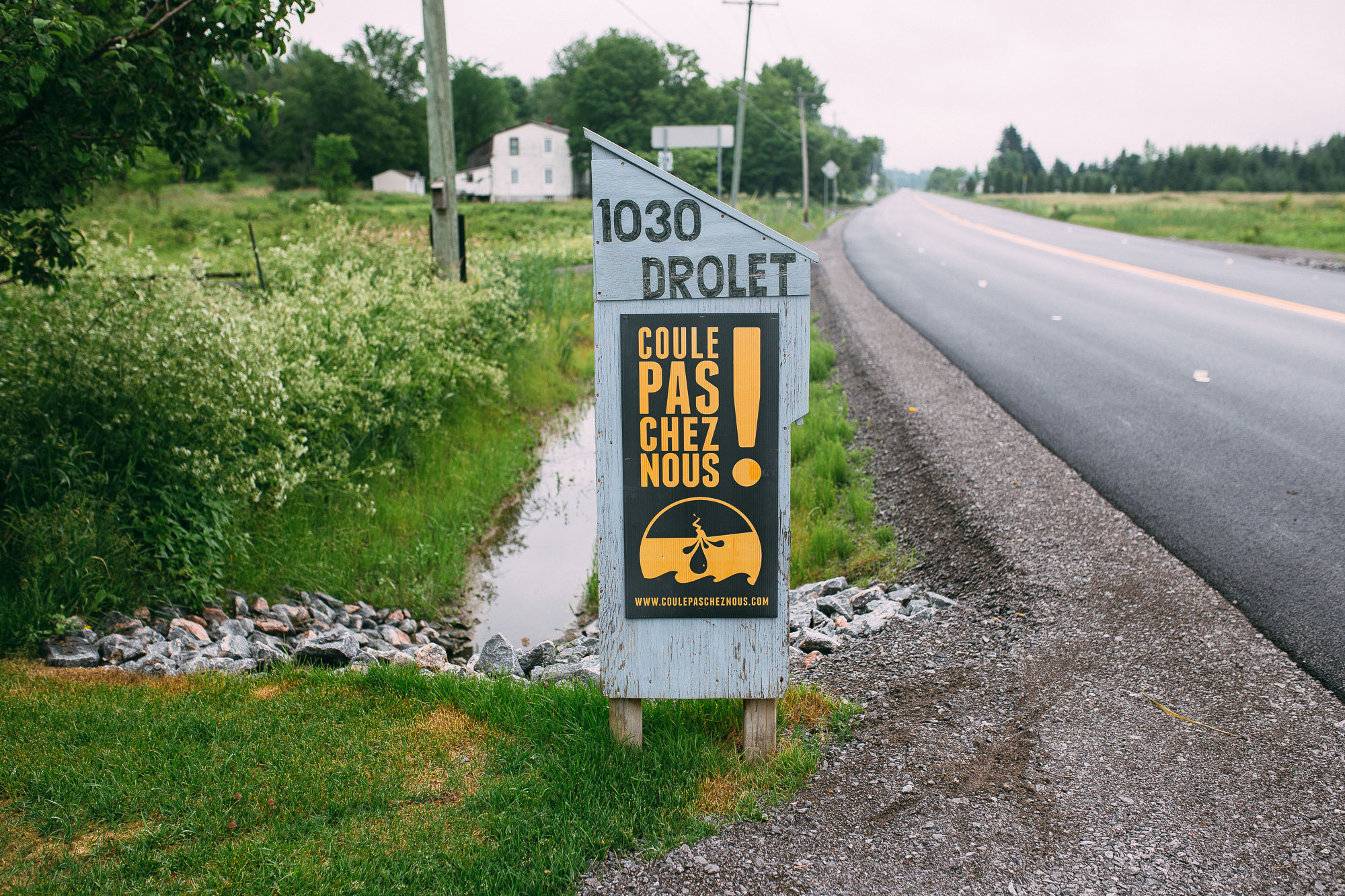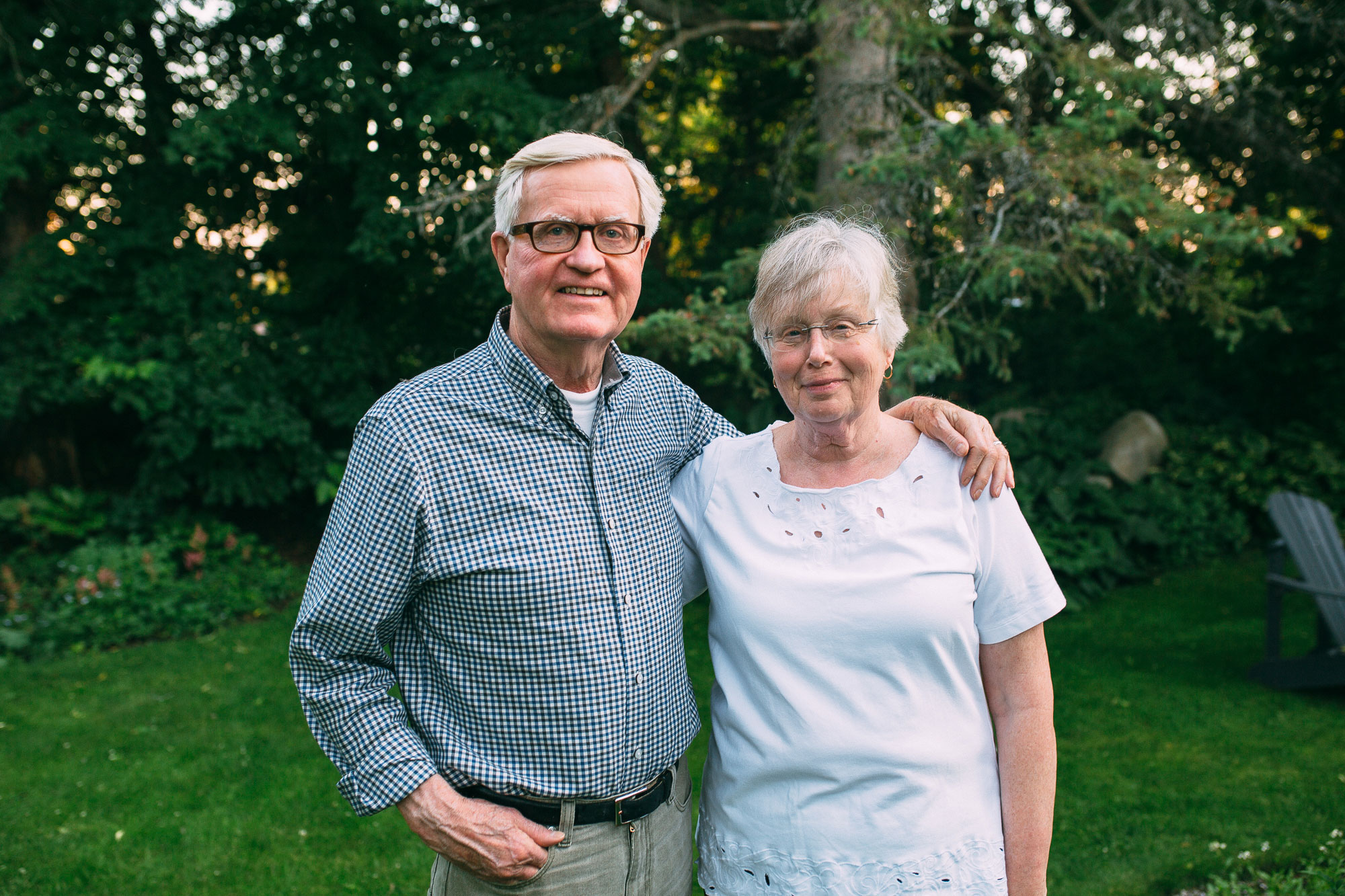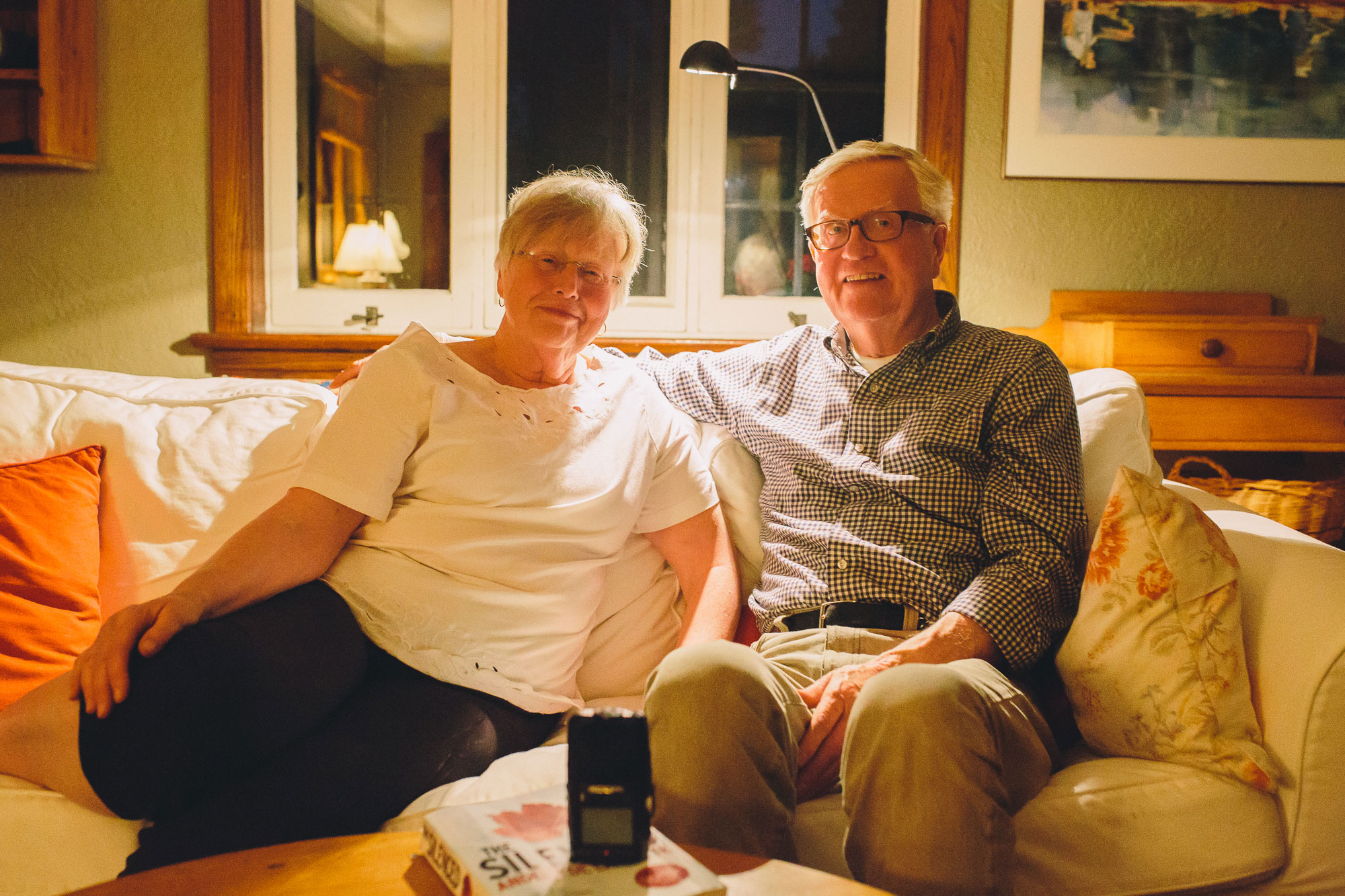I first heard the phrase ‘coule pas chez nous’ at a climate-related civil disobedience action in Ottawa in November 2015, and I heard it again while training to risk arrest for the day of action closing COP 21 in Paris a month later. Then, cycling on the north shore of the St. Lawrence River in June, it was back.
Coule pas chez nous, which translates inelegantly to ‘don’t flow in our home,’ is a Québécois collective organizing against oil pipeline expansion projects like TransCanada’s Energy East pipeline and Enbridge’s Line 9 reversal. The St. Lawrence River valley contained numerous signs demonstrating opposition to pipelines through Québec and advocating for the protection of water systems.

I tried to interview someone in Québec but wasn’t able to. When I told this to our host in North Bay, however, I found out that North Bay is also a centre of pipeline resistance and got connected to two local organizers, Jim and Donna Sinclair. If Coule pas chez nous leads the regional resistance to Energy East in Québec, Stop Energy East does the same for North Bay and the surrounding region. Jim and Donna are part of that.

Energy East is a proposal to convert and construct a 4,500-km pipeline from the Athabaska region of western Canada to the Atlantic region of eastern Canada. The pipeline would transport over a million barrels per day of a mix of crude oils, included diluted bitumen. The Energy East project is the largest tar sands pipeline ever proposed and would be larger than any existing pipeline in Canada.
Compared to the proposed terminus of the Kinder Morgan Trans Mountain pipeline with oil tankers navigating the Burrard Inlet and Salish Sea off the coast of British Columbia, the risk posed by the route of Energy East is perhaps indistinct. This 3D imaging from Ontario Rivers Alliance, in that respect, is quite impactful.
There are a lot of reasons for North Bay to be opposed to Energy East. Most citizens’ primary concern is the threat to their water supply—pipelines leak and sometimes catastrophically rupture, like the 2010 spill into the Kalamazoo River. TransCanada is unable to detect ‘minor’ leaks of up to 16,000 barrels a day and unable to effectively clean up bitumen. This is exacerbated by the fact that the current pipeline is 40 years old and built for much lighter-weight gas.
“The more you learn about this thing,” said Donna, “the more completely ridiculous it becomes. It is a truly ridiculous $13-billion project that threatens thousands of waterways across the country with a leaky, antique pipeline that was not intended for this kind of abrasive, corrosive product. So we think it’s ridiculous.”
“TransCanada has visited us many times, and they, apparently, don’t think it’s ridiculous.”
TransCanada’s position has to be that it’s not ridiculous, because their entire industry depends on manufacturing a dependence on fossil fuels and growing the carbon bubble for as long as possible. Expansion only makes sense. It’s a process that has repeated multiple times across the Canadian landscape, for multiple industries.
“Both Jim and I grew up in northern Ontario, so we know what it is to live in a resource-based economy. That’s what northern Ontario is. We grew up knowing what it was to write off a river, if you were going to have that mine. Then we went to Schefferville, the largest open pit mine in Canada. So we are not innocent when it comes to people having to make their living from resource extraction. We’re very sympathetic to that. We grew up with that. In a way, we feel some sense of responsibility to that.”
Responsibility, for Jim and Donna, means standing tirelessly against the pipeline project. They told me they’ve been organizing for over four years. But they are aware of their context. “It’s very interesting to be on this issue in North Bay because there are over sixty companies in North Bay, which is a mining supply centre amongst other things, that are part of the supply chain sending products into the tar sands.”
The North Bay City Council has set aside $250,000 for the city to do its research into the presentation that it will make to the National Energy Board. Opposition to Energy East is not unanimous in North Bay, but it certainly is powerful.
That opposition spans the route of the pipeline, from Faraday Trout Lake Cottagers and Landowners Association to the Quebec Federation of Municipalities to the Treaty Alliance Against Tar Sands Expansion, and so on.
“Opposition has arisen in all these amoebas, as it were, along the line right out to Hardisty. We’ve just seen it blossom across the country.”
TransCanada has tried to placate North Bay, said Jim, by proposing that they’ll just go around the town. “Well then, if you have any sensitivity to Algonquin territory or the Mattawa territory, you’re in someone’s territory. It’s not the same as the wilderness.”
“We’ve just come through Standing Rock,” added Donna. “That was exactly what they said. ‘We’ll just put it around Bismarck,’ around the White city.” She paused and her voice grew softer. “We don’t want to see that happening here.”
Another method of placation, if that’s a good noun for it, has been assurances that bitumen can be quickly and effectively cleaned up. “They talk about what will happen if they have a spill. They tell us bitumen won’t sink. Well, we put the lie to that. There’s studies that have indicated,” Jim started to explain, then simply said, “It sank in Kalamazoo.” The risk of bitumen in the water system around North Bay affects nearly every part of life for the local population. “If we get a certain spill,” he said, “it’s going to get into where our water intake is. In order to prevent it from getting into the water system, we’re going to have to shut off the water. Which means we have nine hours left of water suppression in our city.”
A little bit later, Jim talked about a confrontation between TransCanada’s representatives and a local. “This [TransCanada] guy was talking about what if they have a spill in the winter, and our friend said to him, ‘Well, what would you do?’ And he said, ‘Well, we have a trailer with all kinds of equipment, and we can get there in ten minutes.’ Our seasoned, grizzled Pat looked at him and said, ‘You’re not from around here, are you?’”
Local water isn’t the only risk posed by Energy East. Jim and Donna also talked about the expansion of the tar sands and the issues related to that, things like upstream pollution and oil tankers in the Bay of Fundy, tailings lakes and climate change. Donna talked about threats to free speech and local sovereignty. Jim described Indigenous rights and health implications for First Nations communities.
“We don’t have to sit back and watch our country become a petrostate.”
I asked about where their steadfast opposition came from. “I’ve thought about this question a lot,” began Donna, “because the ready answer is, well of course I’m doing it for my grandchildren, and that’s certainly true.”
“But even if I didn’t have grandchildren, I think that it is immoral to destroy a planet, and that’s what this is about. In the biggest picture, we’re talking about climate change, we’re talking about wrecking a huge piece of the boreal forest, we’re talking about destroying the third-largest watershed in the world by dumping all that stuff into the Athabaska River. This is immoral. I would be fighting this as a matter of spiritual integrity, even if I didn’t have grandchildren.”
“Extractive industry has not been a good citizen,” said Jim. He described the relationships he was part of through the United Church of Canada to international mining watch organizations and similar groups. “This is our version, one aspect of what’s happening in Canada that is an echo of where we have been, for years and decades now, been partnering with overseas Indigenous groups, NGOs, to make a healthier life and community.”
“Okay,” I said, “but do you really think that you guys, who are just everyday citizens, can stand up against a giant corporation?”
There really wasn’t any hesitation. “Yes.”
“That’s the short answer,” said Jim. “The major players are pulling out of the tar sands already, and they’re selling to second-tier people. They’re all saying this is madness on the part of Canada, the tar sands. And I think we’re a conduit for that kind of thinking into a community where we have a heavy attachment to the tar sands.”
Donna talked about the change in media coverage over the last several years, with industry being challenged by environmentalists, activists and climate scientists alike. “All of a sudden there’s more than one voice,” she said, “and I think that’s crucial. That’s what we do.”
“And our role, we’re both retired, our role is no one can fire us. We can say what we want.”
They talked about the inspiration they got from an elderly woman who was arrested at the Clayoquot Sound civil disobedience actions of 1993. “She was eighty-something, and she was on the line and stopping the big equipment. Then of course these RCMP people come along and they assist her up and they’re taking her away to arrest her. She says, ‘Oh just excuse me a moment.’ Then she looks right at the TV cameras and says, ‘I just want to say I’m very proud to be arrested for my country and protecting the forest, and that’s why I’m here. That’s what everybody should be doing.’ And off they took her.”
“That was imprinted upon us, twenty five years ago. That was imprinted upon us.”
“We can’t not be involved in this. There’s no way.”
The last thing we talked about was the spiritual context of their focus on blocking the Energy East pipeline. “We’ve been brought up in the United Church of Canada, and we’ve seen public, very thoughtful witnessing to injustice. One thing that illustrates the place of the church for me is one of our friends, Elizabeth Fraser, an ordained person, retired now. When the Ontario Energy Board came here, we were packed out and people were making presentations. Elizabeth gets up to the podium, and people are murmuring as different speakers are coming and going, then all of a sudden everything was quiet, just unusually quiet, the kind of thing where you look up at what’s going on here. She was reaching in her bag and pulled out her stole, and she put her stole on. There was utter silence.”
A stole is a part of the traditional clothing of some ministers.
“Her statement was: you ruin our water, you ruin our city. And that hit people. What it reminded me of was, innately, whether you were active in the church or not, there was a silence because there was an expectation here that something important was going to happen.”

That sort of relates to what I find to be one of the most interesting parts of this conversation. I guess it’s one thing to hear about climate change and fossil fuel resistance from punk university kids, or to hear about water protection from Indigenous activists. It’s another to hear about it from the perspective of Jim and Donna. There’s a lot behind their commitment to opposing Energy East. There’s local solidarity, for example, there’s scientific evidence, spiritual integrity and a determination to witness injustice.
As such, I think, there’s a lot that can be learned.